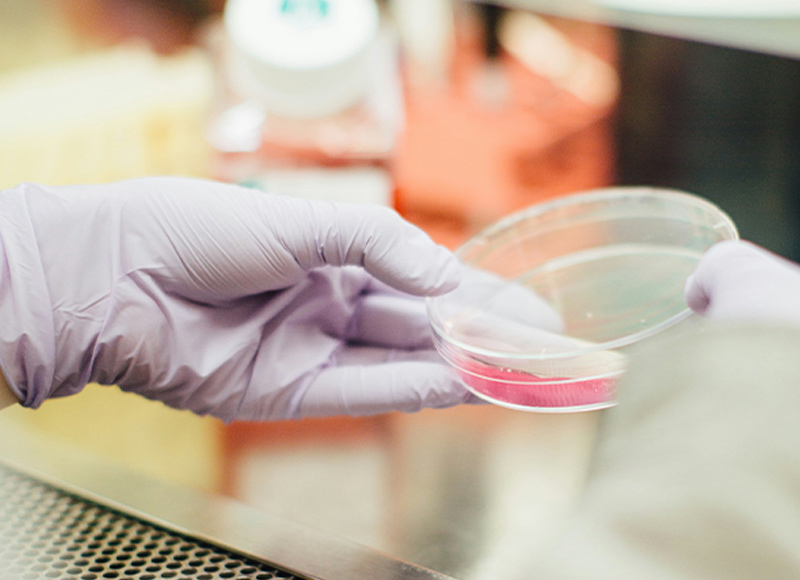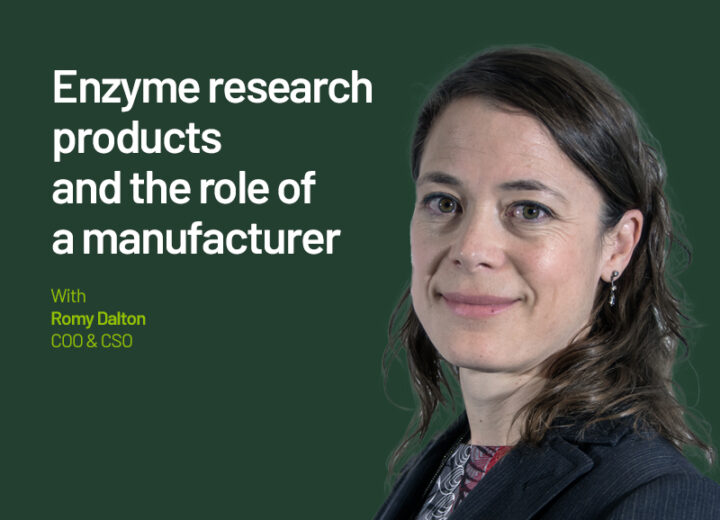14 March 2024
The Real-World Impact Of Accessible Protein Development

There have been significant innovations made to make accessible protein development possible in the 21st century. Despite this, cost remains a significant bottleneck. It is one of the biggest reasons that both the life sciences and cultivated meat industries, which rely on specific proteins, are unable to produce products or scale quickly enough.
The direct result of this is clear. Products such as genomic testing and sustainable meat alternatives are not readily available to the general public.
However, the impacts go much deeper than access. In fact, the current price of proteins has a significant knock-on effect global issues like climate change and healthcare practices.
So, let’s look at these impacts, and how lowering the cost associated with protein development has huge implications for people’s lives.
Making proactive healthcare an everyday reality
Currently, reagent costs, particularly enzymes, are a huge bottleneck to providing pre-emptive and predictive patient care.
Let’s look at genomic testing as an example.
A single genome test currently costs around $300, up to 40% of which is attributed to the reagent.
This is considerably cheaper compared to the billions it cost in 1990-2000s, or in 2016 when $1000 became the gold standard, but it still exceeds what insurance companies are willing to pay by $200.
By their calculations, it’s more cost-effective to pay a few people for disease-related expenses in 20 years’ time, than it is to pay for many people to get tested pre-emptively.
So, patients often aren’t reimbursed for a genomic test. As a result, doctors are unlikely to recommend it as a viable option.
Instead of having issues tested for, detected and mitigated early on, a huge pool of people is waiting decades to be diagnosed when symptoms begin to appear. By this time, treatment is likely much less effective.
They have already missed out on potentially life-saving healthcare, because the costs are too high.
Cocoon’s technology is tackling this bottleneck.
T4 DNA ligase is priced at over €1000/mg and is the most expensive component of gene sequencing. The reason this enzyme (and others) is so expensive is because it’s difficult to produce, especially at the effectiveness and quality needed to provide a reliable test.
We can achieve this at a fraction of the cost by using natural bioreactors, in the form of cocoons. At this cost, a whole genome test can be priced at €100/test instead of €300/test, which means insurers would reimburse it as standard.
Suddenly, genomic testing can be placed in every doctor’s office, catching debilitating diseases early enough to enable proactive treatment. Treatments like mRNA cost 10 times less. And overall, tests will be provided more regularly, when they’re needed, across the globe.
Making accessible protein development available to all
The challenges for life sciences are not unique: cultivated meat is experiencing the same cost barriers.
The surface impact of high growth factor costs is that cultivated meat cannot be priced competitively enough to become a grocery shop staple. But this isn’t just an issue of variety.
Cultivated meat represents a way to significantly reduce our carbon footprint by reducing the number of livestock reared for meat. It also produces more protein per m2 than cattle, which frees up land resources and increases our production of much–needed calories.
The issue is that while a kilogram of meat only requires milligrams of growth factor, the growth factors represent roughly 90% of total production costs. This is an unsustainable disparity.
In order to scale up production of cultivated meat, this percentage needs to fall dramatically.
Our aim is to reduce this to well less than 10%.
Using cocoons as bioreactors, we cut out traditionally high Capex costs and our automated platform reduces Opex. We’ll continue to reduce our costs, aspiring to a point where cultivated meat production is not just on par with traditional meat, but it’s cheaper.
Doing so would allow cultivated meat providers to price their products competitively. They could invest less and produce more. And as an industry, providers could paint a much more compelling picture of a viable future for alternative meats to investors.
Therefore, making the cost of growth factors more accessible would accelerate industry growth, giving the world a lower cost and more environmentally sustainable protein source.
These goals are not achievable tomorrow, but they are possible and within reach. Our mission is to continue developing our technology to make proteins more cost-effective, so we can make positive innovations like proactive healthcare and sustainable food supplies accessible to people everywhere.



